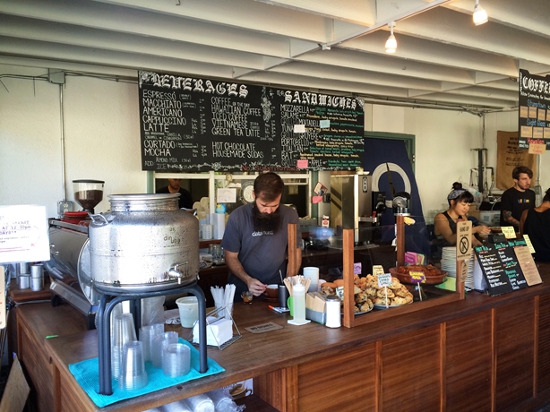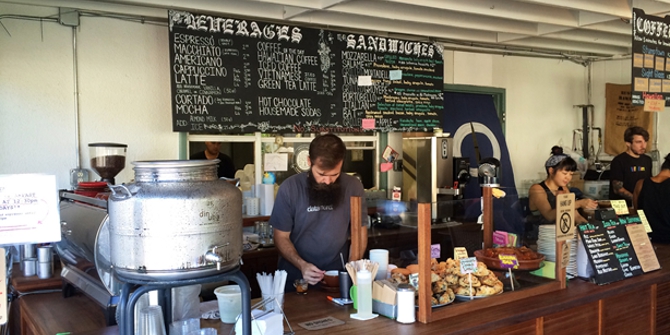 Why is there more crime in some neighborhoods than others? While many investigations into the causes of crime tend to focus on individual motivation, new research from James Wo looks at the role of local institutions, such as shops, bars and nonprofits. He finds that these often relatively mundane institutions have meaningful consequences for neighborhood crime levels. While bars and liquor stores have an adverse effect on violent crime (but not for property crime), “third” places such as local coffee shops and cafes have crime reducing effects on both violent and property crime. He argues that city planners, politicians, and residents should take these factors into account when considering where new organizations and businesses are established.
Why is there more crime in some neighborhoods than others? While many investigations into the causes of crime tend to focus on individual motivation, new research from James Wo looks at the role of local institutions, such as shops, bars and nonprofits. He finds that these often relatively mundane institutions have meaningful consequences for neighborhood crime levels. While bars and liquor stores have an adverse effect on violent crime (but not for property crime), “third” places such as local coffee shops and cafes have crime reducing effects on both violent and property crime. He argues that city planners, politicians, and residents should take these factors into account when considering where new organizations and businesses are established.
People tend to focus solely on the individual when trying to understand the causes of crime. This tendency can be explained by their own experiences and depictions in the media. Although criminological research has provided valuable insight regarding why some individuals commit crime (and why others do not), high crime rates can also manifest themselves consistently in certain neighborhoods; crime is not randomly distributed. This begs the question: what factors explain differences in neighborhood crime rates over and above the criminal disposition of individual residents?
An emerging body of research investigates differences in neighborhood crime by focusing on local institutions. Local institutions provide residents a host of services and activities, which includes but is not limited to banking, entertainment, retail, politics, advocacy, religion, and social services. While the presence of local institutions is largely viewed to be beneficial to neighborhoods from an economic standpoint, there is reason to believe that local institutions exert protective and adverse effects on neighborhood crime rates. In recent research, using a large sample of neighborhoods from nine U.S. cities, I find that local institutions such as coffee shops and cafes reduce crime, while bars and liquor stores have an adverse effect on violent crime levels.
Figure 1 – Do local coffee shops enhance neighborhood cohesion and expand neighborhood ties, which in turn leads to less crime?

Some local institutions are hypothesized to have crime reducing effects due to their ability to facilitate a neighborhood dynamic in which residents share common values and goals, trust one another, and are willing to intervene on behalf of the common good. For instance, many nonprofits strengthen the community capacity to take action on a range of civic priorities and basic human needs (e.g., urban revitalization, affordable housing, health services, recreation/sports, and cultural awareness). As another example, local coffee shops and cafes (academically referred to as “third places”) provide an informal gathering place for residents to maintain social ties as well as form new relationships with fellow residents. Although nonprofits and “third places” rarely operate on the basis of crime control, the prosocial interaction that occurs within these settings may translate into crime control benefits.
Figure 2 – Do alcohol outlets present elevated levels of criminal opportunity?

On the other hand, some types of local institutions are posited to be crime attractors because they provide an opportunity structure (or situational setting) in which crime is likely to occur. That is, some institutions have a relatively high probability for the convergence in time and space of a motivated offender, suitable target, and the absence of a capable guardian. Bars and liquor stores are a classic example, as many establishments operate late into the night, have raucous and intoxicated customers known to carry cash, and are located in areas with a limited police presence. Similarly, payday lenders likely increase criminal opportunities because the availability of large sums of cash at late hours during the evening, as well as on the weekend, is advantageous to offenders victimizing patrons.
In recent research, I tested some of these hypotheses and preconceived notions regarding the institutional effects on crime. Using a sample of neighborhoods across nine U.S. cities from 1998 to 2008, I found confirming evidence that neighborhood control and criminal opportunity, emanating from institutions, simultaneously operates in neighborhoods to affect crime rates. In particular, when accounting for traditional predictors of neighborhood crime such as prior levels of poverty, length of residence, and ethnic composition, I showed that bars and liquor stores have an adverse effect on violent crime (but not for property crime). Conversely, although the analyses failed to demonstrate any crime reducing effects of nonprofit organizations, “third” places such as local coffee shops and cafes revealed crime reducing effects on both violent and property crime. So what does this mean for neighborhoods?
Every year, city planners, entrepreneurs, politicians, and neighborhood residents collectively determine where new organizations and businesses establish in neighborhoods. While the potential installment of a government facility such as a hospital, landfill, prison, or police satiation instantly makes residents wonder, “will this have a positive impact on our neighborhood?,” this is probably less so when it comes to the potential installment of everyday retail centers, coffee shops, banks, civic organizations, and alcohol outlets. However, my research along with others suggests that relatively mundane local institutions have meaningful consequences for neighborhoods, most notably with respect to crime. Therefore, in the future, I encourage that people pause from time to time, and think about whether the local institutions in their respective neighborhoods may increase or decrease crime.
As a general framework for reducing crime, I propose that the following place-based strategies might be effective for neighborhoods:
Elected officials, urban planners, neighborhood residents, and law enforcement should discuss the implementation of zoning laws that potentially limit the number (or density) of new alcohol outlets in neighborhoods. Law enforcement should identify areas within neighborhoods where many alcohol outlets are located, and subsequently, determine whether an increase in the number of patrol officers and the level of surveillance in such areas is warranted based on the intersection of poverty, residential mobility, population density, land use characteristics, and crime.
Community organizers, business owners, volunteers, and religious leaders need to promote formal events (e.g., fundraisers, fairs, festivals, sports) and informal events (e.g., coffee shop gatherings) that enhance cohesion and social ties amongst residents. In an age of social media and technology, neighborhoods are arguably less connected than generations prior. This makes it inherently difficult for neighborhoods to solve and prevent crime without the help from law enforcement. Finally, nonprofits and residents need to come together to address social hardships and social problems.
This article is based on the paper ‘Community Context of Crime: A Longitudinal Examination of the Effects of Local Institutions on Neighborhood Crime’, in Crime & Delinquency.
Please read our comments policy before commenting.
Note: This article gives the views of the author, and not the position of USApp– American Politics and Policy, nor of the London School of Economics.
Shortened URL for this post: http://bit.ly/1pZucsI
_________________________________
 James Wo – University of California, Irvine
James Wo – University of California, Irvine
James Wo is a doctoral student in the Department of Criminology, Law and Society at the University of California, Irvine. His research interests include the community context of crime, local institutions,civic engagement, and quantitative methodology. He is a member of the Irvine Laboratory for the Study of Space and Crime (ILSSC).





1 Comments